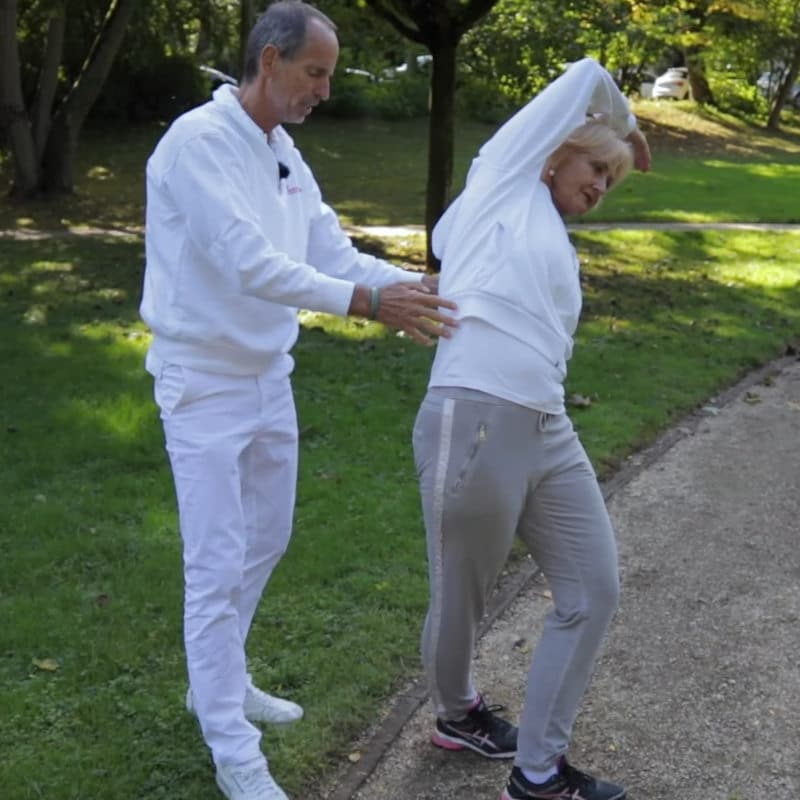Trochanteric Bursitis Exercises
Body Part:
Hip
Equipment:
None
Level:
Beginner
Body Part:
Hip
Equipment:
None
Level:
Beginner
The hip joint is an amazing one, designed to support a whopping six to eight times the amount of our body weight when we walk, run, or jog. Regardless of where we tip the scale, that’s a hefty amount, especially when you consider how often the average person walks. Our hips are essential to our movement, but most of us don’t realize how much we need them until this ball-and-socket mechanism starts to hurt.
Trochanteric bursitis is a condition that causes pain at the outside of the hip. Also known as greater trochanteric pain syndrome (GTPS), trochanteric bursitis is the result of an inflamed or irritated bursa. Bursae are fluid-filled sacs between our bones and soft tissue. Muscles, tendons, and ligaments glide over the bones when our joints move. The bursae work like a cushion, ensuring that the movement is smooth and friction-free.
We have two primary bursae in our hips: the iliopsoas bursa (located in the front of the hip) and the greater trochanter bursa (which covers a bony bump at the outer edge of the hip called the greater trochanter.)
You may develop trochanteric bursitis if:
Trochanteric bursitis causes pain along the outside of the hip. When the pain starts, it’s sharp and intense. After a while, it becomes a dull ache. The pain may spread across your hip and travel down your leg.
Trochanteric bursitis can be aggravated by:
In most cases, trochanteric bursitis can be treated easily. This stretch only takes 2 minutes, and it can help relieve the pain and inflammation you’re experiencing in your hip. Follow along with our video, or scroll down for step-by-step instructions.

Sign up for our free newsletter and discover how to manage your pain yourself. Every two weeks, we’ll deliver follow-along videos and articles to your inbox.

If you find it challenging to maintain a secure stance in this position, try supporting yourself with a chair.
Set yourself a goal of stretching twice a day, once in the morning and again in the evening, six days a week for three weeks. As soon as you notice that your hip pain is becoming less intense, you can reduce how often you exercise. Maintain your stretching routine until the pain goes away completely.

Sign up for our free newsletter and discover how to manage your pain yourself. Every two weeks, we’ll deliver follow-along videos and articles to your inbox.
Then we would be happy if you shared it with your friends: